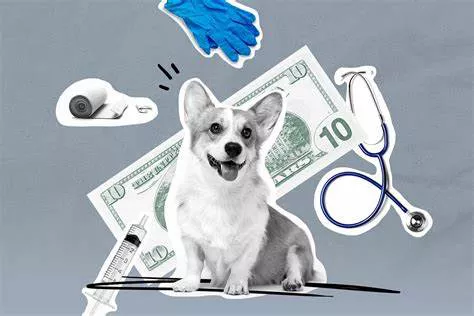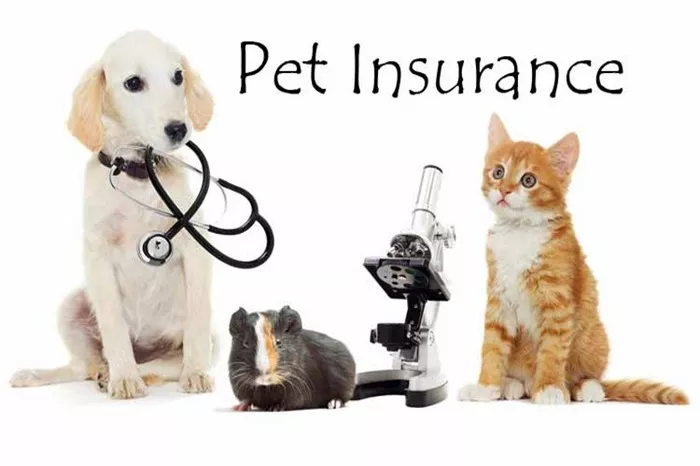Pet insurance is becoming increasingly popular among pet owners who want to ensure that their furry friends receive the best possible care without the financial strain. One of the key features to understand in pet insurance policies is the concept of an “annual policy limit.” Some pet insurance plans offer a “no annual policy limit” option, which can be highly beneficial. This article will delve into what no annual policy limit means, how it works, and why it might be an excellent choice for pet owners.
Understanding Pet Insurance
What is Pet Insurance?
Definition: Pet insurance is a type of insurance policy that helps cover the cost of veterinary care for pets. It functions similarly to health insurance for humans.
Purpose: The primary purpose of pet insurance is to alleviate the financial burden of veterinary expenses, ensuring that pet owners can afford necessary treatments for their pets without compromising their finances.
Types of Coverage
Accident-Only Coverage: This covers injuries resulting from accidents, such as fractures or cuts.
Illness Coverage: This includes treatments for diseases and conditions like cancer, diabetes, and infections.
Comprehensive Coverage: This combines accident and illness coverage, offering extensive protection for a wide range of medical issues.
Wellness Coverage: An add-on option that covers routine and preventive care, such as vaccinations and annual check-ups.
What is an Annual Policy Limit?
Definition of Annual Policy Limit
Annual Policy Limit: The maximum amount an insurance company will pay out in claims over a policy year. Once this limit is reached, the policyholder is responsible for any additional veterinary expenses until the policy renews.
Importance of Annual Policy Limit
Financial Planning: Knowing the annual policy limit helps pet owners plan for potential out-of-pocket expenses.
Coverage Adequacy: A higher annual limit or no limit at all ensures more comprehensive coverage, reducing the likelihood of reaching the payout cap during the policy year.
No Annual Policy Limit Explained
Definition of No Annual Policy Limit
No Annual Policy Limit: A pet insurance policy with no annual limit does not cap the amount the insurer will pay out in claims each year. This means there is no maximum payout threshold within a 12-month policy period.
How It Works
Unlimited Coverage: With no annual limit, the insurance will cover all eligible veterinary expenses within the policy’s terms, regardless of the total cost.
Claim Process: The process for filing claims remains the same. Pet owners submit their claims, and the insurer reimburses the covered expenses without worrying about hitting an annual cap.
Benefits of No Annual Policy Limit
Peace of Mind: Pet owners do not have to worry about exceeding a payout limit, ensuring continuous coverage for high-cost treatments.
Comprehensive Care: Pets can receive the best possible care without financial restrictions, allowing for advanced and expensive treatments if needed.
Budgeting Ease: Predictable premiums without the risk of high out-of-pocket costs due to policy limits make financial planning easier for pet owners.
Scenarios Where No Annual Policy Limit is Beneficial
Chronic Illnesses
Long-Term Treatments: Pets with chronic conditions such as diabetes or arthritis require ongoing treatment. No annual limit ensures these treatments are continuously covered.
Consistency in Care: Regular check-ups and medications for chronic illnesses can be costly. No annual limit provides financial support for consistent care.
Major Surgeries and Emergencies
Expensive Procedures: Surgeries for serious injuries or illnesses can be very expensive. No annual limit covers these costs without financial stress.
Emergency Situations: Unexpected emergencies, such as accidents or sudden illnesses, can result in substantial veterinary bills. Unlimited coverage ensures these emergencies are fully covered.
Cancer Treatments
High Costs: Cancer treatments, including surgery, chemotherapy, and radiation, can be extremely expensive. No annual limit provides coverage for comprehensive cancer care.
Ongoing Expenses: Cancer treatment often involves long-term expenses. Unlimited coverage supports ongoing treatments without financial caps.
see also:Who Needs Health Insurance?
Factors to Consider When Choosing No Annual Policy Limit
Premium Costs
Higher Premiums: Policies with no annual limit typically have higher premiums due to the unlimited coverage they offer.
Value vs. Cost: Evaluate whether the higher premium is justified by the potential benefits and peace of mind offered by no annual limit.
Pet’s Health History
Pre-Existing Conditions: Consider your pet’s health history. If your pet has pre-existing conditions or is prone to illnesses, no annual limit might be more beneficial.
Breed-Specific Risks: Certain breeds are more prone to specific health issues. If your pet’s breed has known health risks, unlimited coverage can provide essential financial protection.
Veterinary Costs in Your Area
Local Costs: Veterinary costs vary by location. In areas with high veterinary costs, no annual limit can be particularly valuable.
Access to Specialists: If you have access to veterinary specialists who offer advanced treatments, no annual limit ensures you can afford these specialized services.
Comparing Pet Insurance Policies
Coverage Options
Comprehensive vs. Basic: Compare the coverage options of different policies. Comprehensive policies with no annual limit provide the most extensive coverage.
Exclusions: Review the exclusions of each policy. Ensure that the policy covers the treatments and conditions most relevant to your pet.
Reimbursement Levels
Percentage of Reimbursement: Policies typically reimburse a percentage of the covered expenses, usually ranging from 70% to 90%.
Higher Reimbursement: Policies with higher reimbursement levels may have higher premiums but result in lower out-of-pocket costs for claims.
Deductibles
Annual vs. Per-Incident: Deductibles can be annual or per-incident. Choose a deductible that fits your budget and financial planning.
Impact on Premiums: Higher deductibles lower the premium cost but increase out-of-pocket expenses when making a claim.
Policy Limits
Per-Incident and Lifetime Limits: Some policies have per-incident or lifetime limits in addition to annual limits. No annual limit policies may still have these other limits, so review the terms carefully.
No Limits: Ensure that the policy truly has no annual, per-incident, or lifetime limits if you seek complete coverage without financial caps.
Common Exclusions in Pet Insurance Policies
Pre-Existing Conditions
Definition: Pre-existing conditions are health issues that existed before the policy’s start date.
Exclusion: Most pet insurance policies do not cover pre-existing conditions, so it’s important to understand this exclusion.
Routine and Preventive Care
Standard Policies: Routine and preventive care, such as vaccinations and dental cleanings, are often not covered by standard policies.
Add-On Options: Some insurers offer wellness add-ons to cover these routine expenses.
Elective Procedures
Non-Medical Procedures: Procedures that are not medically necessary, like cosmetic surgeries and declawing, are typically excluded.
Policy Specifics: Review the specific exclusions in each policy to understand what elective procedures are not covered.
Behavioral Treatments
Behavioral Issues: Treatments for behavioral issues, such as anxiety and aggression, are often excluded from standard coverage.
Optional Coverage: Some insurers provide optional coverage for behavioral treatments, so consider this if your pet has behavioral issues.
How to Choose the Right Pet Insurance Policy
Assess Your Pet’s Needs
Health and Age: Consider your pet’s health history, age, and potential future health issues when selecting a policy.
Lifestyle and Risks: Evaluate your pet’s lifestyle and the risks they face. Active pets may benefit from more comprehensive coverage.
Compare Policies
Coverage Options: Compare the coverage options, exclusions, limits, and premiums of different policies.
Reputation: Research the reputation of insurance providers. Look for customer reviews and ratings from independent sources.
Understand Policy Terms
Exclusions and Limits: Carefully read the policy terms to understand exclusions and any limits, including per-incident and lifetime limits.
Waiting Periods: Be aware of waiting periods before coverage begins, especially for specific conditions or treatments.
Budget Considerations
Affordability: Choose a policy that fits your budget while providing adequate coverage for your pet’s needs.
Cost vs. Benefit: Evaluate the cost versus the benefits of the policy to ensure it provides good value for the premium paid.
Filing a Pet Insurance Claim
Know the Process
Documentation: Understand the documentation required for filing a claim, including veterinary records and receipts.
Claim Form: Complete the claim form accurately and submit it along with the required documentation.
Timely Submission
Prompt Filing: File the claim promptly after the treatment to avoid delays in processing.
Follow Up: Follow up with the insurance provider to check the status of your claim and provide any additional information if requested.
Reimbursement
Review Payment: Once the claim is processed, review the reimbursement to ensure it matches the covered expenses.
Appeal if Necessary: If your claim is denied or the reimbursement is lower than expected, appeal the decision with additional documentation or clarification.
Frequently Asked Questions About No Annual Policy Limit
Is No Annual Policy Limit Worth It?
Value: No annual policy limit is worth it if the potential veterinary expenses justify the higher premium. It provides comprehensive coverage and peace of mind.
Financial Protection: It offers significant financial protection, especially for pets with chronic conditions or those prone to accidents and illnesses.
Can I Change My Policy to No Annual Limit?
Policy Adjustments: You can often adjust your policy at renewal to include no annual limit. Contact your insurer to discuss your options.
New Policies: If your current insurer doesn’t offer no annual limit, consider switching to a provider that does.
How Does No Annual Limit Affect Premiums?
Higher Premiums: Policies with no annual limit typically have higher premiums due to the unlimited coverage.
Cost vs. Benefit: Evaluate the cost versus the benefit of unlimited coverage to determine if it fits your budget and provides sufficient value.
Conclusion
Pet insurance with no annual policy limit offers comprehensive coverage, ensuring your pets receive the best possible care without financial constraints. It provides peace of mind, knowing that there are no limits on the amount the insurer will pay out in a policy year.
Understanding the concept of no annual policy limit, its benefits, and factors to consider when choosing a policy can help you make an informed decision. Assess your pet’s needs, compare policies, and understand the terms to select the best coverage.
By choosing a pet insurance policy with no annual policy limit, you can ensure your furry friends receive the necessary treatment and care, allowing you to enjoy a worry-free and happy life together.






















